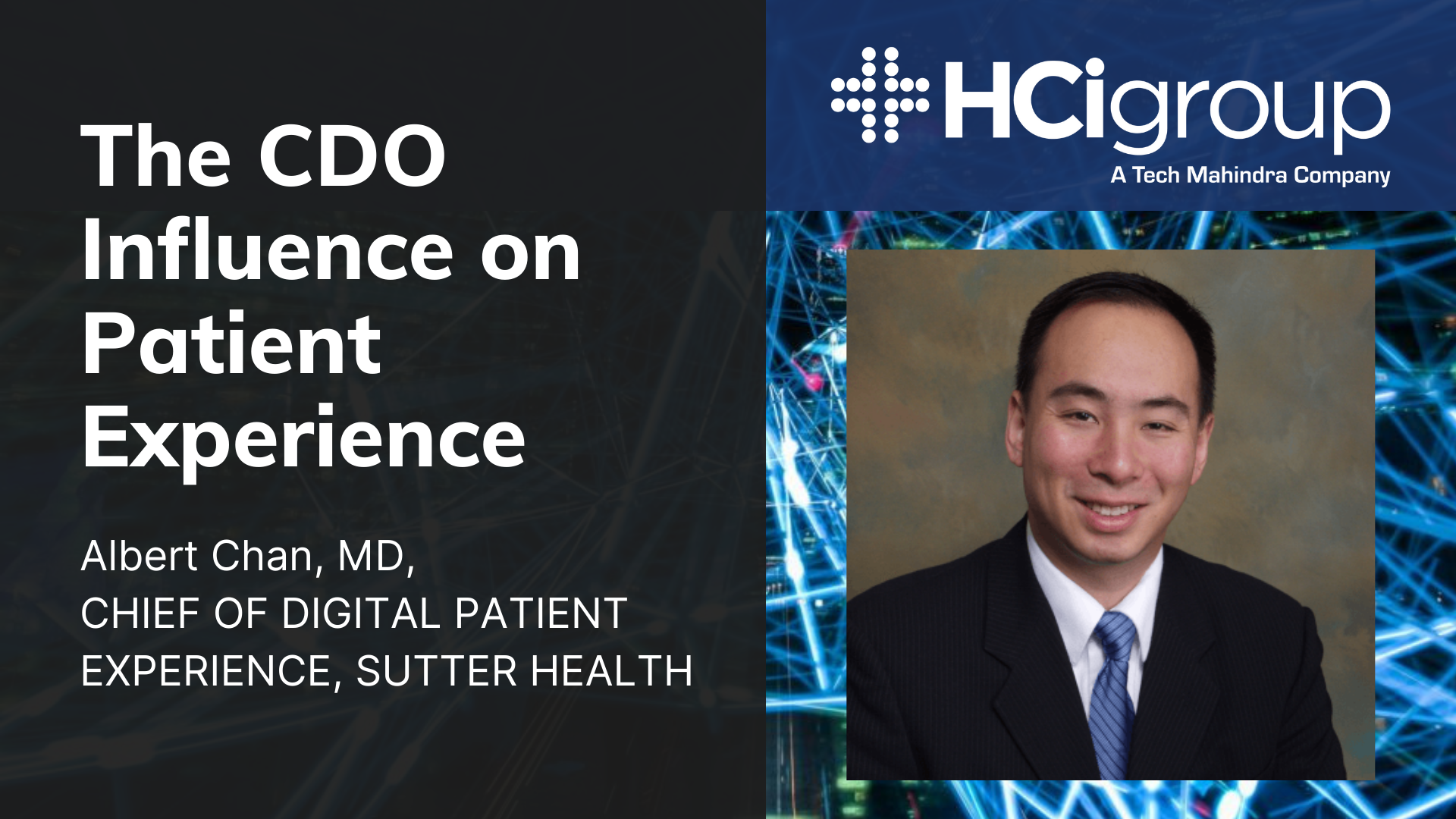The CDO Influence in Patient Experience


Chief of Digital Patient Experience at Sutter Health, Albert Chan, joined the DGTL Voices event to discuss the CDO Influence in Patient Experience. We can all remember when the stay at home orders first happened back in March. What in our lives has changed since Covid-19? They have been digitized. Albert discussed this more, as well as sharing some examples of how Sutter Health improved their service by utilizing digital.
The fourth industrial revolution
Artificial intelligence, big data robotics and digital are here to stay and will profoundly influence the way medicine is practiced both now and in the future. Why is this so important? As you know, over the last several years the united states has gone through a transition of digitizing all our records into electronic health records. What is interesting about the data inside the electronic health record is: who accesses that data? Fundamentally, patients use EHR more than doctors, nurses and other care team professional providers. This shows the profound influence of patients in the patient experience and the need for us to empower them with digital solutions and technologies.
Patient experience is quite complicated
At Sutter Health, we tried to determine what are the barriers to medicine and navigating care. What are the things that get in the way and the impediments to getting great care? Whether you are trying to book an appointment or pay a bill, it is often very challenging to do so. Digital is the way to solve this at scale. When Sutter Health took a hard look at their end-to-end patient journey, from pre-service to post-service, they decided to map out each one of the steps in order to improve patient experience and efficiency of care practices. We looked to digitize each step of the patient journey in some way whether through automation and self service or just by reducing the barriers to care that exist today.
One example of how we optimized our work flows through digital include our Digital Personal Protective Equipment (PPE). We added AI navigation to make it easier for patients to navigate the care 24/7, video visits so that patients could receive care no matter where they were and implemented contactless check-ins. We have even extended that last concept to our employees using a QR based Covid-19 screening to improve safety and screening.
The Virtual Care Shift
As many systems around the country experienced, telehealth and virtual care has really changed the landscape with regards to care. Prior to Covid-19, we used to perform about 20 video visits per day. After, we peaked at 7000 video visits per day. We went from 50 physicians being able to provide video visits to almost 4700 videos visits per practitioners. We used to do less than 1% of appointments by video visits and we peaked at 30% today. This truly expresses the power of digital. We took our rolling plan slated to take two years and got it done in four weeks. That was only made possible by digital. To quote my colleague, Aarti Srinivasan, M.D:
"Telemedicine is perhaps the only silver lining of this horrible pandemic. It is transformative. I don't think we'll ever go back to medicine BC (before coronavirus).
There is so much time to spend interacting one-on-one with the patient. I felt for the very first time, the entirety of the visit was spent caring for the patient, without distractions.
Over the next few weeks, each and every day will be shaping the way we practice medicine AC (after coronavirus)"
